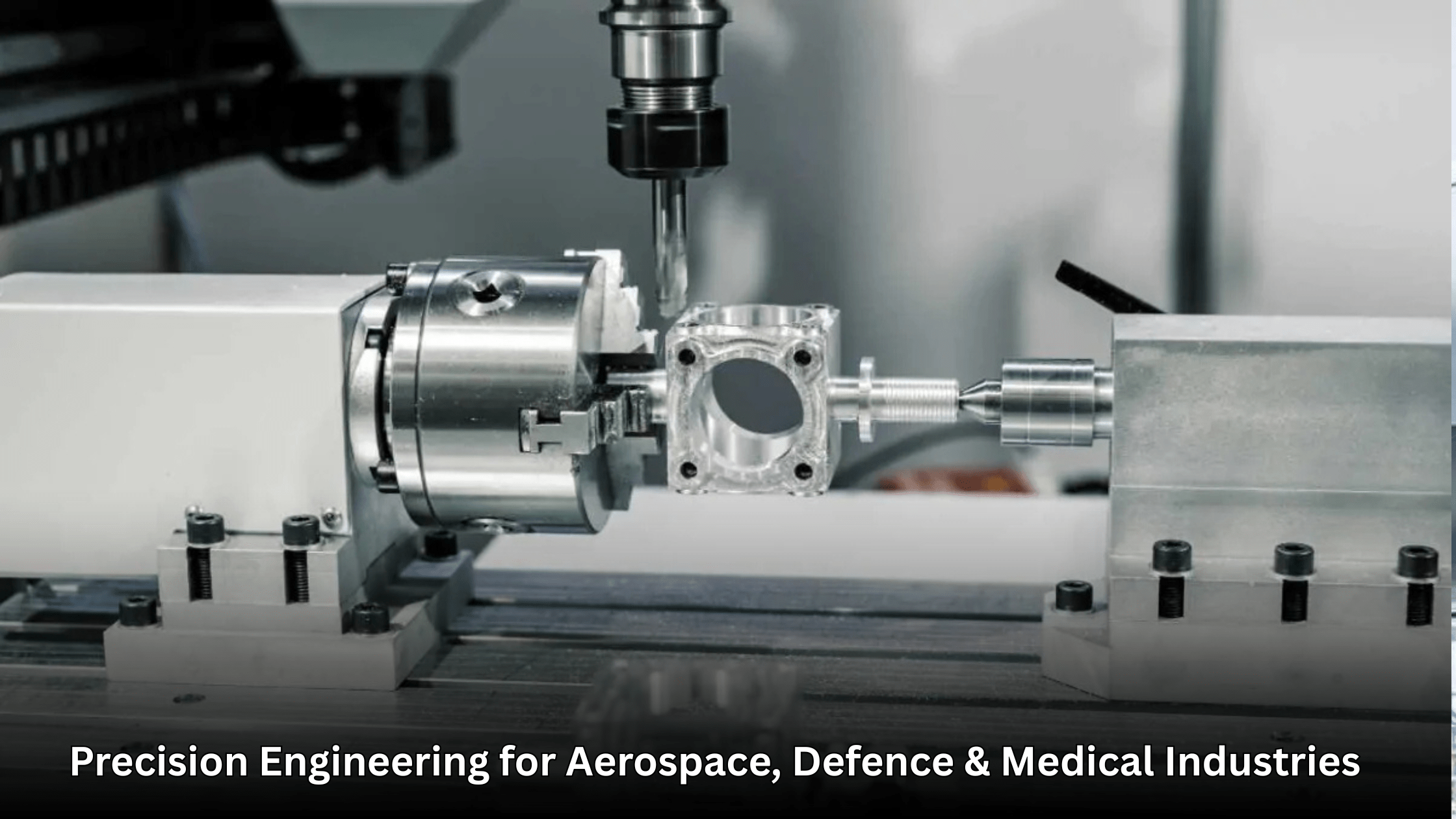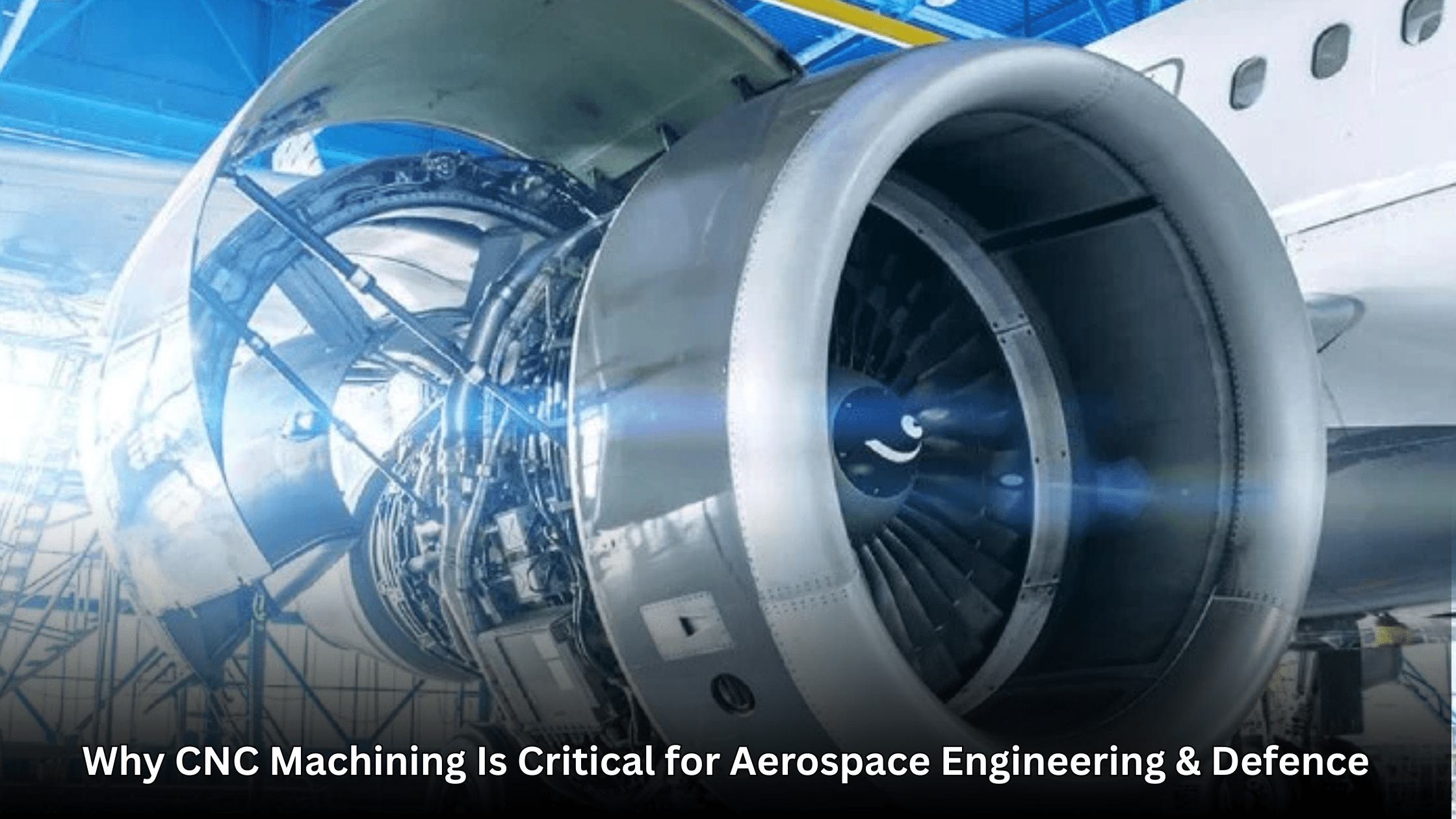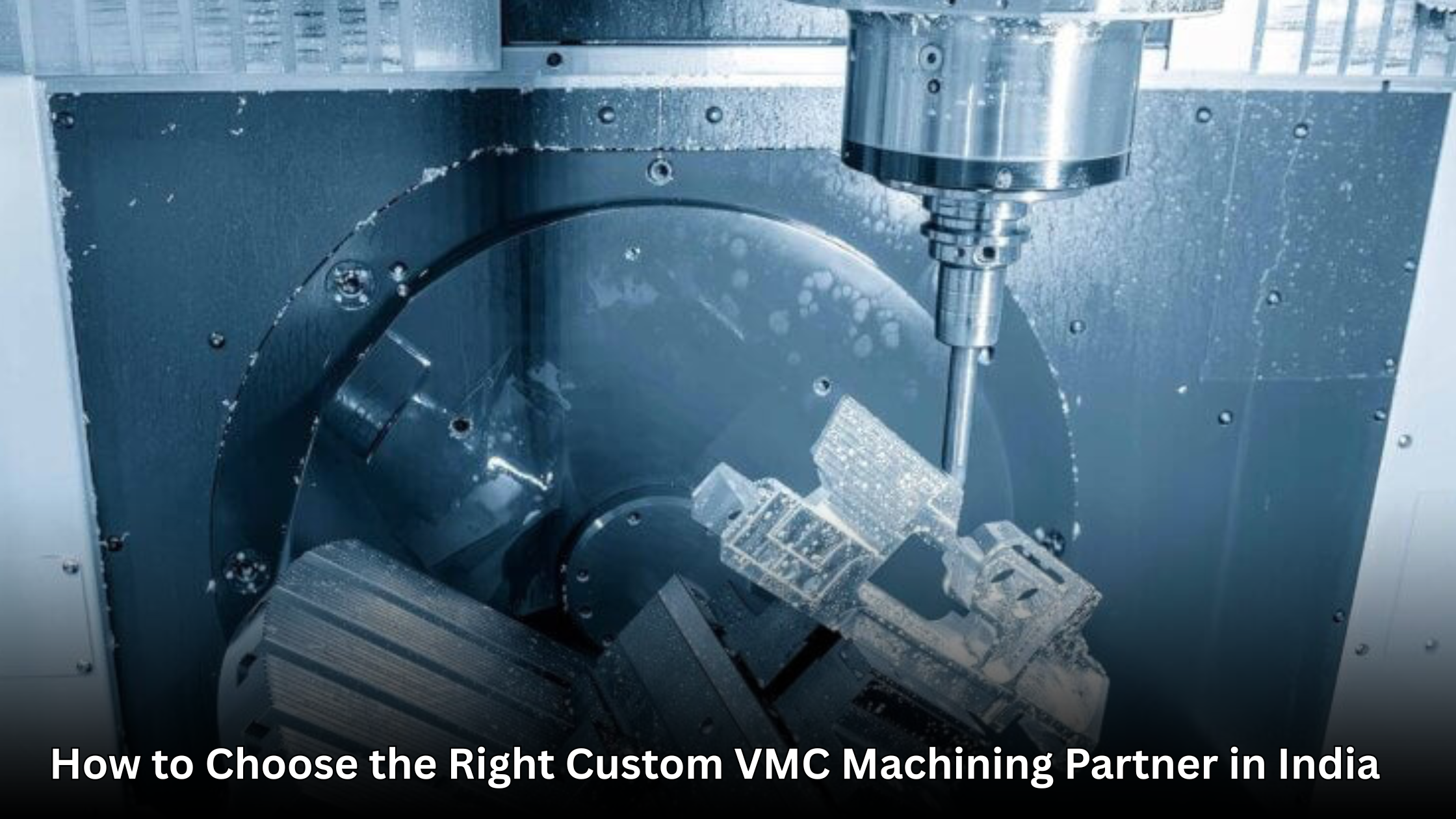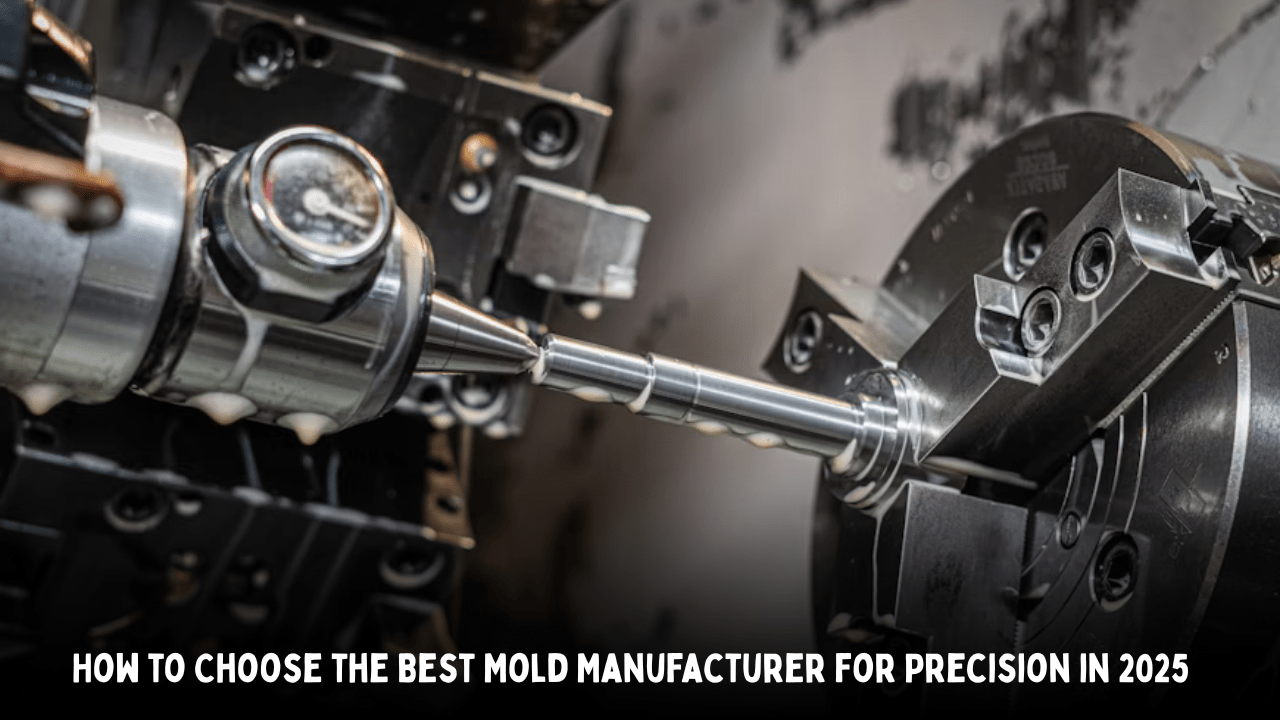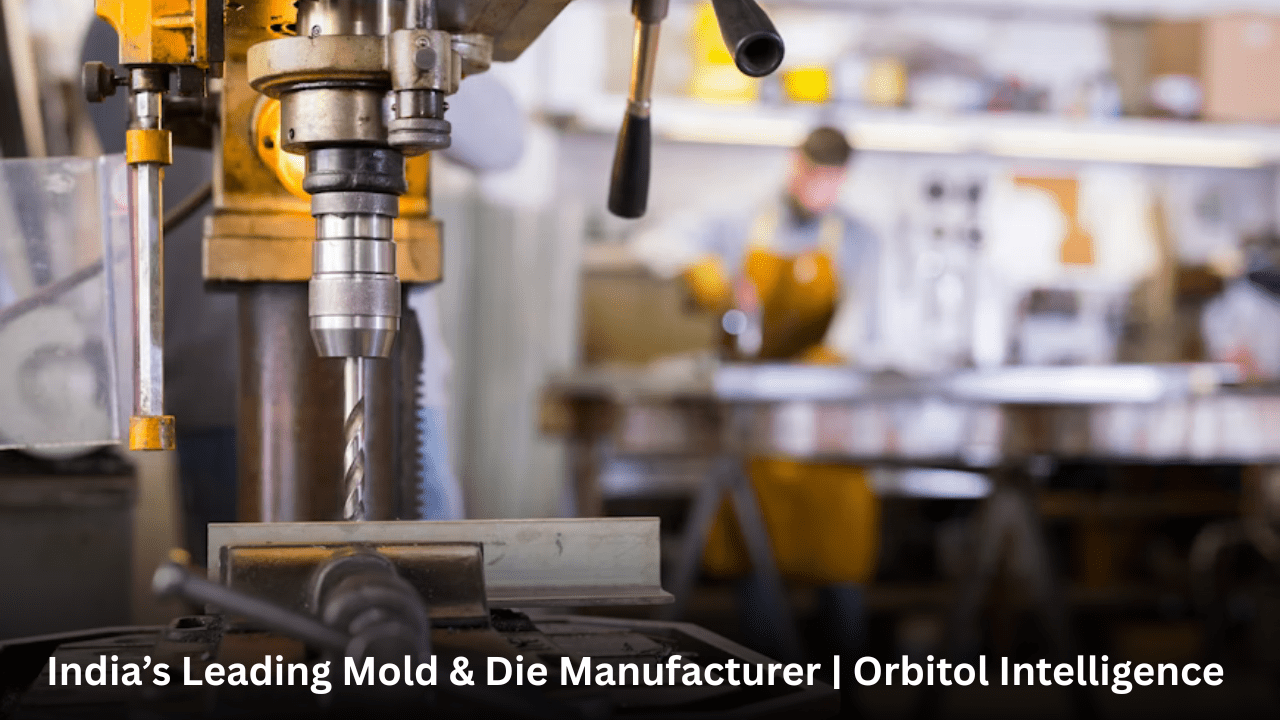In the rapidly changing world of precision engineering, where the main factors for success are the accuracy, consistency, and speed, the influence of technologies implementing advanced machining cannot be minimized. Among the numerous instruments and systems used presently, CNC and VMC machines are considered as the pillars of contemporary manufacturing, which are leading to the reshaping of various sectors like automotive, aerospace, and medical equipment through their unparalleled accuracies.
Then, what really makes CNC different from VMC? And why are VMC machines so often preferred in today’s production environments with high tolerance?
Delving further to check how these machines breaking down the limits of modern precision manufacturing.
Understanding the Basics: CNC vs VMC Machines
Before jumping into the pros, it is necessary to grasp the real meaning of these terms.
CNC Machines (Computer Numerical Control)
The abbreviation CNC stands forComputer Numerical Control, which is any machine that entails the automation of the motion and the control of the process through the use of a computer.
Regardless of turning, milling, drilling, or grinding, a CNC machine guarantees that each and every cut and curve is done exactly according to the program down to the last micron.
CNC machines can be any of the following types:
CNC turning centers
CNC milling machines
CNC lathes
CNC routers, etc.
They are employed heavily on the production of auto parts, pressure die casting, and dies manufacturing, taking the lead in the uniformity and rapidity of the complicated production cycles.
VMC Machines (Vertical Machining Centers)
A VMC is a kind of CNC where the spindle axis is vertically oriented.
These machines are usually used for the milling, drilling, tapping, and cutting of metal parts with extreme precision.
Compared to HMC, VMCs are better at parts with smooth surfaces and complex shapes, which is why they are widely used in the precision parts industry of aerospace, medical, and automotive.
1. Superior Precision and Consistency
VMCs excel in precision engineering field when compared to other machines.Cleaning by gravity is possible for VMCs due to their vertical position, which allows for less wear of the tool and longer usage of the tool.
Every element that is processed with the use of a VMC is exactly the same as the next one. It is an indispensable feature in such zones as making of aerospace parts or surgical instruments where a 0.01mm deviation may result in product failure.
On the contrary, standard CNC machines may be less accurate, but VMC provide a more solid base for machining especially for those parts that are to be machined on multiple faces.
Main idea:
In case your task requires tight tolerance along with repeatable precision, then VMC machines are better than the traditional CNC set ups.
2. Versatility Across Industries
VMCs have shown their great versatility through the whole range of use from the manufacturing of the automotive components to the production of the medical equipment.
Let’s look at how different industries leverage them:
Automotive Parts Manufacturing:
VMC machines can do well in the areas of engine block milling, gearbox housing, brake system component, etc. parts. Their feature of being able to maintain consistency throughout the large number of pieces provides for reliability and cost-effectiveness in mass production.
Aerospace Components:
In aerospace, every ounce, every strengthening, every measuring counts. VMCs make it easy to deliver perfect turbine blades, faultless aircraft brackets, and the exact parts of the landing gear.
Medical and Surgical Equipment:
Ranging from surgical instruments to orthopedic implants, VMC machines make sure that materials such as titanium and stainless steel which are compatible with the human body are processed with smooth surfaces and exact sizes.
Injection Molding and Die Manufacturing:
VMCs hold the key to dies manufacturing and mold forming for pressure die casting and injection molding machine making, giving off the mix that is perfect between surface smoothness and dimensional accuracy.
3. Enhanced Automation and Workflow Efficiency
Currently, CNC VMC machines come with the automation tool changers, multi-axis controls, and advanced sensors that require less manual intervention.
Such automation entails:
Decreased human error
Shorter production time
Standard outputs
Elevated safety
Incorporation of computer control and real-time feedback allows multiple runs of different processes simultaneously-thereby raising shop floor productivity without sacrificing high precision.
Many adopters also wire VMCs into Industry 4.0 networks where machine health is monitored in real time rendering maintenance scheduling more accurate and time free.
4. Complex Geometries Made Easy
The charm of a VMC machine is its potential to transform complex shapes and multi-dimensional parts into seamless ones.
Whether you are building complicated aerospace components or precision automotive parts, a CNC VMC machine is capable of dealing with hard materials and designs that if done manually would require several setups.
Moreover, due to multi-axis machining capabilities (3-axis, 4-axis, and 5-axis VMCs) manufacturers are able to make use of compound angles, contours, and deep cavities with the utmost precision all in one set up.
Not only does this reduce the time for machining but it also ensures the part remains dimensionally stable throughout the process.
5. Cost Efficiency and High ROI
It’s true that VMC machines may start with a sky-high cost, but that doesn’t take long for the advantages to overshadow the expense.
Here’s the reason:
Less material wastage
Reduced rework
Lower tool wear
Faster production rates
Minimal manpower requirement
In high-volume production scenarios such as automotive parts manufacturing or injection molding die fabrication VMCs offer excellent return on investment (ROI) due to their reliability and reduced operational costs.
The downtime is also minimized by manufacturers as they rely on the predictive maintenance alerts and easy part replacements that modern VMCs provide.
6. High-Speed Machining Capabilities
Most of the time, you can’t have it both ways, i.e., speed and precision but it is possible with VMC machines.
The fast cutting spindles and the robust VMC structure make it possible for VMCs to take out a considerable portion of the material in a very short time and at the same time keep the surface quality. This is the reason why such machines are used in aerospace and automotive industries where the production schedule is quite tight and quality is not allowed to be compromised.
Deep cooling technology and vibration-absorption devices, which allow high speed and long operation, have also contributed to elevating the productivity.
7. Superior Surface Finish and Dimensional Accuracy
In the world of precision manufacturing, producing a smooth surface is the very signs of high-quality work.
The normal vertical VMC has been proven to be leaving the most finish in terms of quality on both metals, alloys, and composites thanks to its design which causes tool friction and vibration to be nearly zero.
Such industries as medical equipment manufacturers and producers of surgical utensils require the final stages of sterilization and the durability of the product to be achieved at the very same stage thus this fine finish is absolutely necessary for these two fields.
8. Ease of Programming and Operation
Programming is made simpler with the user-friendly interface found in modern CNC VMC machines which allows operators to quickly create or modify tool paths. In addition to the material-programming, they can carry out 3D simulations of the whole machining operation prior to the actual cutting the risk of problems lowering significantly.
This is the case regardless of the manufacture of automotive parts or pressure die casting molds. Fast prototyping becomes possible due to this versatility and, thus, moving from design to production is accelerated.
9. Eco-Efficient and Sustainable Manufacturing
The VMCs of today are being created with the energy consumption and environmental impact as important factors to be taken into consideration. The use of waste and resource consumption has been minimized by the advanced lubrication systems, coolant recycling units, and chip management technologies.
On one hand, the prolonged tool life and on the other, the minimal material use, both contributed by CNC VMC machines, become great enablers of sustainable precision engineering practices a factor that is increasingly becoming more important in the global manufacturing sector.
10. Integration with Digital Manufacturing
Transitioning into the smart manufacturing age, VMC machines have gotten to the stage where they fit in clean and neat with CAD/CAM systems, ERP solutions, and IoT devices.
Digitally connected is the VMC of the future, which allows for:
Supervision in real-time to verify the optimal performance of the machining process
Automatic gathering of data
Application of maintenance-related premonitory analytics
Giving back for the purpose of continuous improvement through feedback loops
It’s of great help to turn to this digital era for a precision engineering company when it comes to ensuring the international quality standards of every automotive component, aerospace part, or medical instrument are met in a consistent manner.
Conclusion: The Future of Precision Engineering with VMC Machines
When talking about CNC vs VMC machines, VMC machines are allowed to take the lead in precision, speed, and flexibility without a doubt. This makes them an essential tool in the next generation of precision manufacturing.
If you are into automobile shaping, aerospace components manufacturing, or medical device engineering, I would say buying a CNC VMC machine is akin to buying accuracy, efficiency, and innovation.
As industry needs continue to trend towards faster production and tighter tolerances, VMC machines will become the backbone of modern manufacturing that will be powering the future of precision engineering with every perfect cut.

